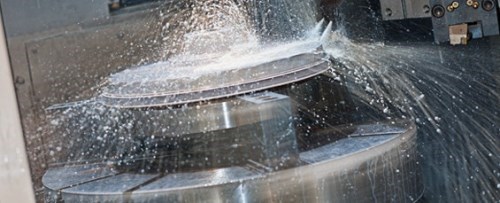The Case for VTLs
The vertical lathe configuration offers advantages that go beyond large-part machining.

Joe Thole, applications engineer with machine tool distributor Hartwig, says the VTL (vertical turning lathe, vertical turret lathe or vertical table lathe—take your pick) offers advantages that go beyond the main advantage most people see.
That main advantage is that a VTL offers a practical way to turn large and heavy parts. The part sits atop the spindle like it is resting on a table.
But there are other advantages, he says. A VTL is inherently rigid, because cutting force is directed down into the base of the machine. Also, this lathe type is more floorspace-efficient than a horizontal lathe, because in the case of the vertical, the machine’s volume extends upward instead of being spread out across the floor.
Then there are the myths. VTLs are not more difficult to program, he says—programming is essentially the same as for a horizontal lathe. More significantly, VTLs are not dependent on large parts. Shops question whether they have enough large-part machining work to justify a vertical lathe, but the question really should be whether they have enough work in general. When there are no large parts to be run, the VTL can still deliver value by running average-sized workpieces.
Read more of what Mr. Thole has to say about VTLs in this article.
Photo courtesy of Okuma.
Related Content
-
Digital Twins Give CNC Machining a Head Start
Model-based manufacturing and the digital thread enable Sikorsky to reduce lead times by machining helicopter components before designs are finalized.
-
Kaast Machine Tools Updates Dual-Spindle Lathe
The A-Turn SYMCNC Dual-Spindle Lathe is now available in four different swing lengths, including 22.5", 24", 26.75" or 36".
-
How to Start a Swiss Machining Department From Scratch
When Shamrock Precision needed to cut production time of its bread-and-butter parts in half, it turned to a new type of machine tool and a new CAM system. Here’s how the company succeeded, despite the newness of it all.

.jpg;width=70;height=70;mode=crop)






.jpg;maxWidth=300;quality=90)



.png;maxWidth=300;quality=90)



